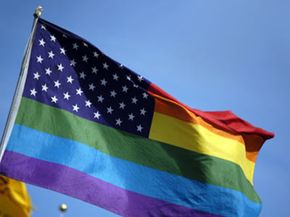Most Americans have heard of the "sit in" demonstrations during the Civil Rights Movement and Vietnam War protests. But what about the "sip in"?
The "sip in" was a protest staged by the Mattachine Society -- one of the oldest gay rights organizations in the U.S. -- to challenge the State Liquor Authority's (SLA) regulations against serving gay people in New York City bars.
Advertisement
In April 1966, four members of the Mattachine Society entered Julius Bar in the West Village and ordered drinks. When they told the bartender they were homosexuals, he refused to serve them [source: Jackson]. The society then sued the bar and the SLA.
At the time, there was no law on the books prohibiting bars from serving gay people, but the SLA often raided gay establishments, charging patrons with "disorderly conduct" and fining bar owners. As a result, many Manhattan bars posted signs in their windows with phrases like, "If you're gay, go away" [source: Jackson].
No law was overturned as the result of the sip in, but it was followed in later years by pivotal events like the Stonewall Riots in June 1969, when lesbians, transgender women, and drag queens threw bottles and rocks at police who raided Stonewall Inn, a gay bar in Greenwich Village. Thousands gathered in the streets in the following nights. While there had already been other, smaller riots and protests in other cities, this was the first major gay protest to become national news, and it's the reason June is Gay Pride month [source: Carter].
Since then, hundreds of gay rights organizations have sprung up to win the right not only to drink in peace, but to work, go to school, get housing, have children, serve in the military and receive medical care without fear of discrimination or violence.
Read on to find out what strides gay marriage rights organizations have made.
Advertisement
